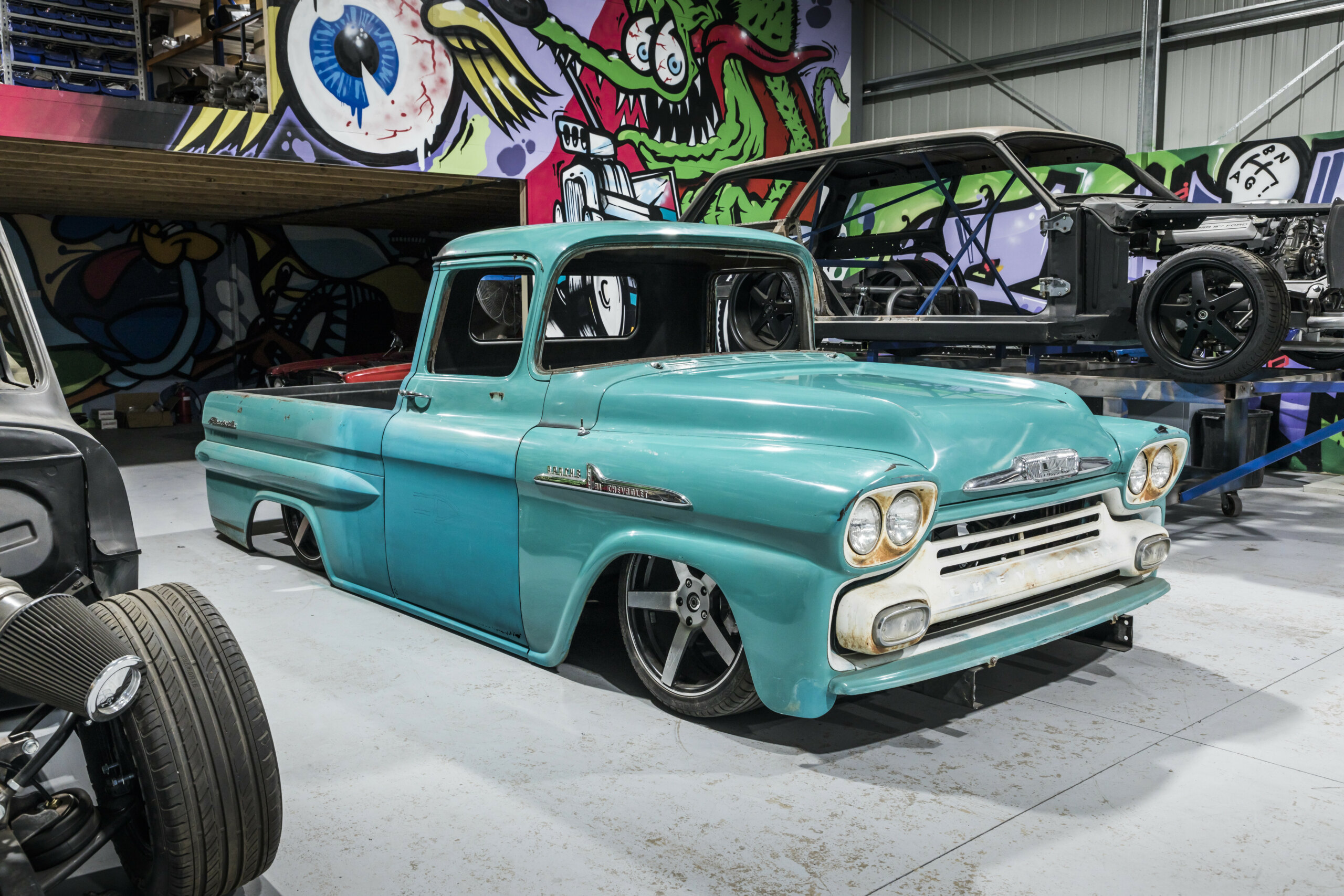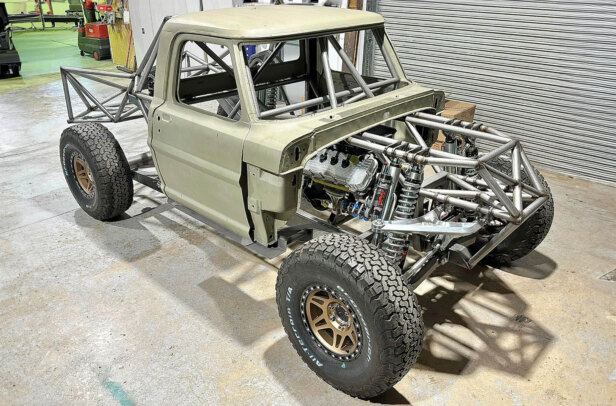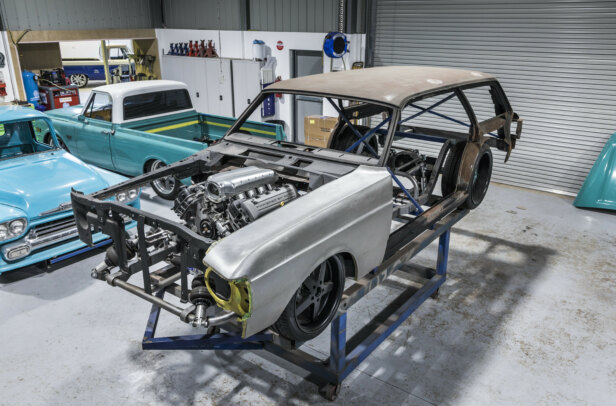With the prices of classic metal currently at record levels, it isn’t surprising that many folks are choosing to restore or lightly modify their builds, lest they impact the value at sale time. Thankfully, not everyone thinks like that, and there are still stacks of creative, boundary-pushing projects on the go in every corner of the country.
Robi Fekete of Fekete Fabrications in Bendigo is an excellent case in point. Aside from his own ’36 Ford coupe, all the builds-in-progess in his shed are being highly modified from top to bottom.
“Everything we do is one-off and tailor-made,” Robi says. “I love pushing limits, coming up with new ideas and doing things people have never done before – I hate building things twice.”
Now 32, Robi started working with cars at the age of 18, undertaking an engine reconditioning apprenticeship while building cars for himself and mates in his spare time. “My apprenticeship was where I learned things like TIG welding while repairing cylinder heads, blocks, manifolds and so on,” he says.
“Everything else, including fabrication, sheet-metal work, design and so on has all come from years of pursuing knowledge online, through TV, books, talking with guys that have done this much longer than I have, and basically just stuffing up enough things until I eventually got the practices down pat.”
In 2014, Robi decided to go it alone and start Fekete Fabrications.
“I rented a workshop in Bendigo and had a crack,” he explains. “When I first started, I was also driving trucks at night for nearly a year while running the workshop during the day.”
Late last year, Robi decided to move the whole operation to his home just outside of town, which brings us to the projects he’s currently working on. “We do basically everything here except for wiring, paint and upholstery,” he says. “I’ll do all the chassis and body fabrication; the suspension; brakes; plumbing for everything from the fuel to the airbags; engine and driveline fitment; front and rear end and diff packages – the whole works. I’ll always try and go even further with every build, just so I can keep the mind ticking over and always be learning and never get complacent.”
At the time of writing, Robi is tackling all of his current projects solo. “I’ve had people help me out here and there, but right now it’s easier for me to do it, as I prefer to be on the tools; I hate micro-managing and I have a high standard that I work towards.”
MAKING IT LEGAL
EVERYTHING Robi builds is 100 per cent engineered and street-legal. “To me, it’s not as challenging building a proper street car if it isn’t actually legal and conforming to some sort of regulation,” he says.
Like all the cars Robi builds, the XW will be fully engineered and on full Victorian rego. Looking at the scale of the mods, you could be forgiven for thinking that it would need to be done as an Individually Constructed Vehicle, which would mean that the car wouldn’t technically be a 1970s Ford anymore and be required to comply with current ADR regulations. Instead, Robi went the full rego route, which still required a stack of homework.
Before work on the XW began, Robi submitted his proposal for the car to VicRoads, and he consults with his engineer throughout the entire process. Starting the conversation early with both VicRoads and his engineer means less back-tracking during the build. “That starts a paper trail with both the engineer and VicRoads confirming that I can build the car as intended, with myself, the engineer and VicRoads all on the same page,” he says.
“Because the original VIN number on the radiator support wasn’t going to be modified or removed, the identity of the car remains intact. The basic silhouette of the car will also remain even with the two-door shape, so as my engineer says, if it looks like a duck and talks like a duck, it can be registered as a duck.”
With so much of the car’s structure modified, the testing procedures for the XW will be extensive. “The car will be torsion tested, which basically involves twisting the entire car on a jig to determine its torsional rigidity in comparison to the factory vehicle,” says Robi. “We’ll also have to go through noise pollution testing, suspension load testing (both digitally modelled and physical), tear-off calculations on all components, brake testing, swerve testing, suspension travel tests and so on. As you can imagine, it’s a very long process.”
So why does he go through all the effort? “Because it makes you push yourself further, and delivering what we do while having it be completely legal is very satisfying,” Robi states. “I don’t even bother these days with my own project cars, as I get to see out my visions with customers’ projects, and I’ve constantly got new ideas floating around for what to do next.”




Comments